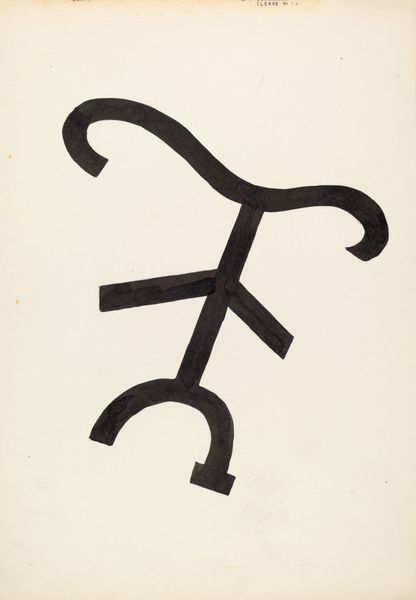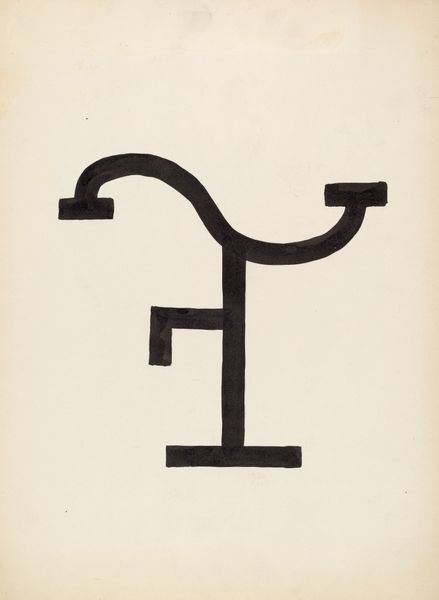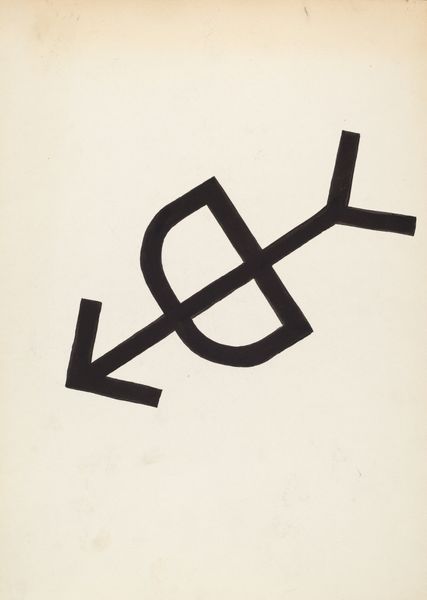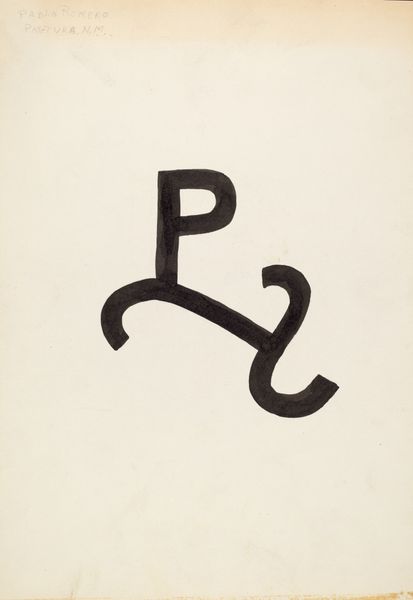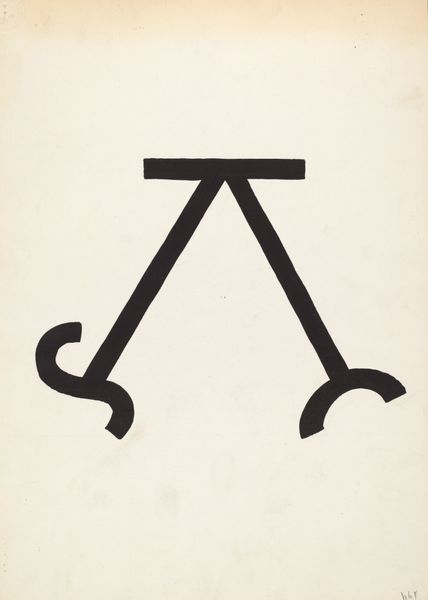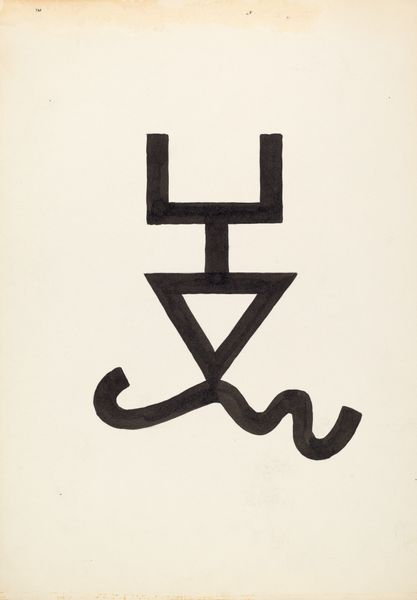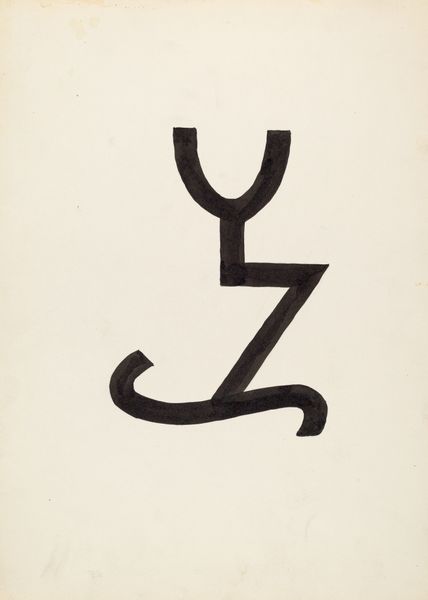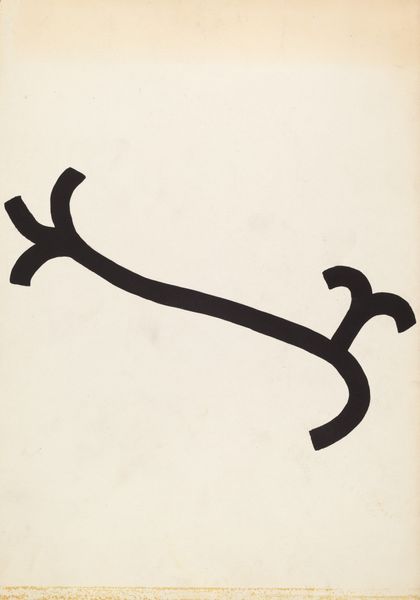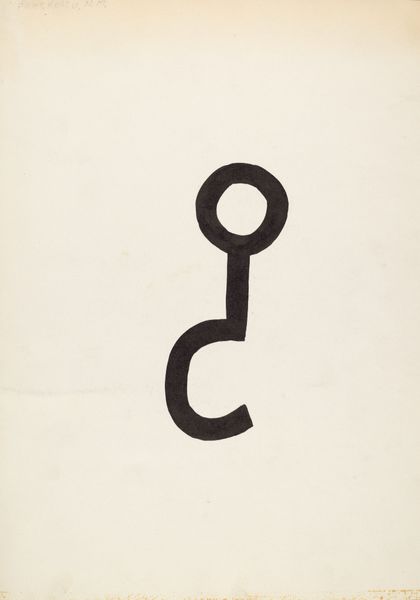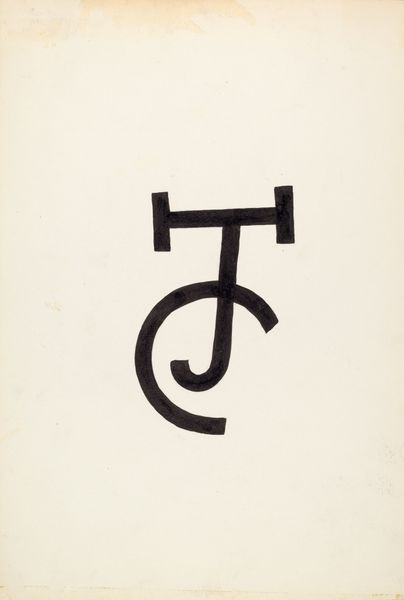
drawing, paper, ink
#
drawing
#
figuration
#
paper
#
ink
#
geometric
#
abstraction
#
line
#
watercolor
Dimensions: overall: 34.6 x 24.6 cm (13 5/8 x 9 11/16 in.)
Copyright: National Gallery of Art: CC0 1.0
Curator: I'm struck by the graphic quality of this image. It's so bold and direct. Editor: Indeed. What we're looking at here is a work titled "Cattle Brand," created around 1936 by J. Henry Marley. It's an ink drawing on paper, simple in its execution. Curator: The term "drawing" might elevate it a bit, though. Given that this is of a cattle brand. The materials speak volumes—ink, paper, the tools of administration made…art. This makes me think about craft traditions and folk art appropriations of industry. It blurs the lines, doesn’t it? Editor: Precisely, and the deliberate choice of representing a cattle brand implicates a host of institutional forces – property rights, agrarian labor, the mythology of the American West. These aren’t innocent marks; they're embedded in a specific social and economic reality. Curator: You're highlighting the commodification inherent to ranching. How the branding tool itself dictates ownership. Editor: The mark has the purpose to exercise that very commodification and control through the act of labor and tools such as that one rendered here, for what it does rather than for its appearance.. How might the audience viewing this react if these mechanisms were more transparent, less obscured as the history has progressed since Marley's time. Curator: And the negative space around the symbol seems significant too. As it isolates this symbol away from the process of applying heat to skin—of literally leaving a trace that indicates loss. The whiteness around the figure amplifies what you said before in some ways, but on this level that deals more with materials rather than society in total as such. It calls to the viewers the means, or material realities through which capital functions at the ground level of an industry such as agriculture Editor: What's also interesting to me is how the presentation in galleries impacts that context. Exhibiting "Cattle Brand" asks viewers to reconsider a utilitarian object. Can institutional acceptance change its social implication? Curator: By exhibiting an artifact like a cattle brand, within these walls and not in some tool and die machine, the artifice involved in shaping an icon like that becomes visible as a cultural construction of course; but it also might draw interest in its specific forms that may be abstracted forms, from its utility. The social implications would change with a revised perception on craft, no? Editor: Indeed. Considering its historical, political, and its very own materiality prompts one to reevaluate their place. Curator: Agreed. Thank you for lending an ear. Editor: My pleasure.
Comments
No comments
Be the first to comment and join the conversation on the ultimate creative platform.
